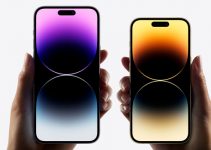Comparing the ARRI ALEXA Mini and the Canon C200 might seem a little unfair given the massive price difference but in my view, it is actually a really interesting test. They have a similar size and weight bodies, similar form factors and are both promoted towards solo shooters. So what does the Arri offer that the C200 doesn’t and is it worth all that extra money?
The Alexa Mini as the name suggests is a smaller version of the coveted ARRI ALEXA. The Mini comes in at about $75,000 with all the required accessories, batteries, handles etc. that would make it usable – however no audio input is included in this option.
The C200 sits in a lovely Goldilocks zone between Canon’s C300 and C100 cameras and despite its rather muted initial reactions, it has now become a popular all-rounder camera. It’s ready to use out the box, including audio inputs for around $7500.
Let’s have a look at the comparisons with Armando Ferriera.
There are plenty of important differences between these cameras and a visit to their respective spec sheets is a good idea.
You can check these out here and here.
A couple of the differences do stick out though…
They have different size and resolution sensors and that means a few things. The field of view is different for starters, but the tests compensate for that quite nicely. The resolution on the Canon is 4K whereas the ARRI is 2.8k upscaled. This one is a headscratcher as surely the vastly more expensive camera should have a high-resolution sensor? The Arri upscaling, however, seems to work beautifully and, according to these tests, it would be hard to tell the difference.
The dynamic ranges of these cameras are also different with the Canon rated at 15 stops and the ARRI at 14 – again, can this be correct? Onwards to the testing.
Colour Science
There is an argument that in this world of Raw and LOG shooting, colour science is nowhere near as important as it once was. With the appropriate application of LUT’s and with the robust, high-bitrate recordings we now have available, perhaps images can be pulled in so many directions so successfully as to render the cameras’ colour science irrelevant?
This seems to be the option of Armando in this video as, to his eye, both cameras render almost indistinguishable colours. At worst they are an excellent match and through his own twitter and facebook polling he found mixed results with only a more discerning filmmaker forum spotting the differences.
Shooting outdoors
Getting out of the studio and both cameras perform beautifully and again, at a glance, there seems no difference and, in some shots, the Canon even performs better.
Extreme lighting conditions
With a model standing in front of a window and exposing the image for her skin, how do the cameras perform? Well, this is where Armando believes the big differences lie. The ARRI is able to recover more in the highlights than the Canon which, despite its claims of a higher dynamic range, seems to clip and stay clipped earlier.
There seems to be more information in the highlights of the ARRI image to help save this shot. Perhaps the ARRI performs better at the extremes of colour and brightness?
This is followed by an over and under-exposure test that seems to confirm this hypothesis.
Conclusion
This video would suggest that the more expensive camera, the ARRI ALEXA Mini, is the better camera not only for its win in the extreme shooting scenario but also for its build quality and components. The Canon is ready straight out the box (just add a memory card) with screen, audio inputs, top handle etc. included and the batteries are smaller, cheaper and last longer but the ARRI is the better camera…
What could you buy with the $67,500 difference in the prices? A tricked-out Dodge Charger? A studio apartment, depending on where you live? Maybe college tuition?
The gap between consumer and pro cameras has been decreasing for years and for me, this kind of test proves it. I appreciate the colours science test and have found similar results myself when matching footage from various cameras. Shooting outdoors should provide some more data but this is a pretty basic test.
The extreme shooting against the window, however, bothers me. If you are familiar with the idea of exposing-to-the-right, when shooting LOG, with a plan to pull back highlight information in post then these kinds of shots will be common for you but you will also know that when the image is clipped – it’s clipped. That’s what’s happening here.
For me, an ARRI will always be a hire camera and a rare one at that, perhaps you are more fortunate in your camera packages than I am but I’m sure that’s not an uncommon position. The C200 is a fantastic, all-around camera that is practical and shoots a beautiful image all while happily recording sound. The difference in price surely cannot be justified by the ARRI being made of carbon fibre and the ability to better handle a badly overexposed image.
In the test that shows the biggest difference here, the leveler would have been lighting. A light on the model, a reflector even could have balanced the scene significantly.
There is more going on here than the testing shows but I am greatly encouraged to see the continued democratization of filmmaking by the shrinking of the gap between the top and middle range cameras.
Don’t buy the brand or the history, look for the camera that works for you without going broke to get it.
[source: Armando Ferreira]
Order Links:
Canon EOS C200 Cinema Camera (EF-Mount) (B&H, Amazon)
Disclaimer: As an Amazon Associate partner and participant in B&H and Adorama Affiliate programmes, we earn a small comission from each purchase made through the affiliate links listed above at no additional cost to you.



